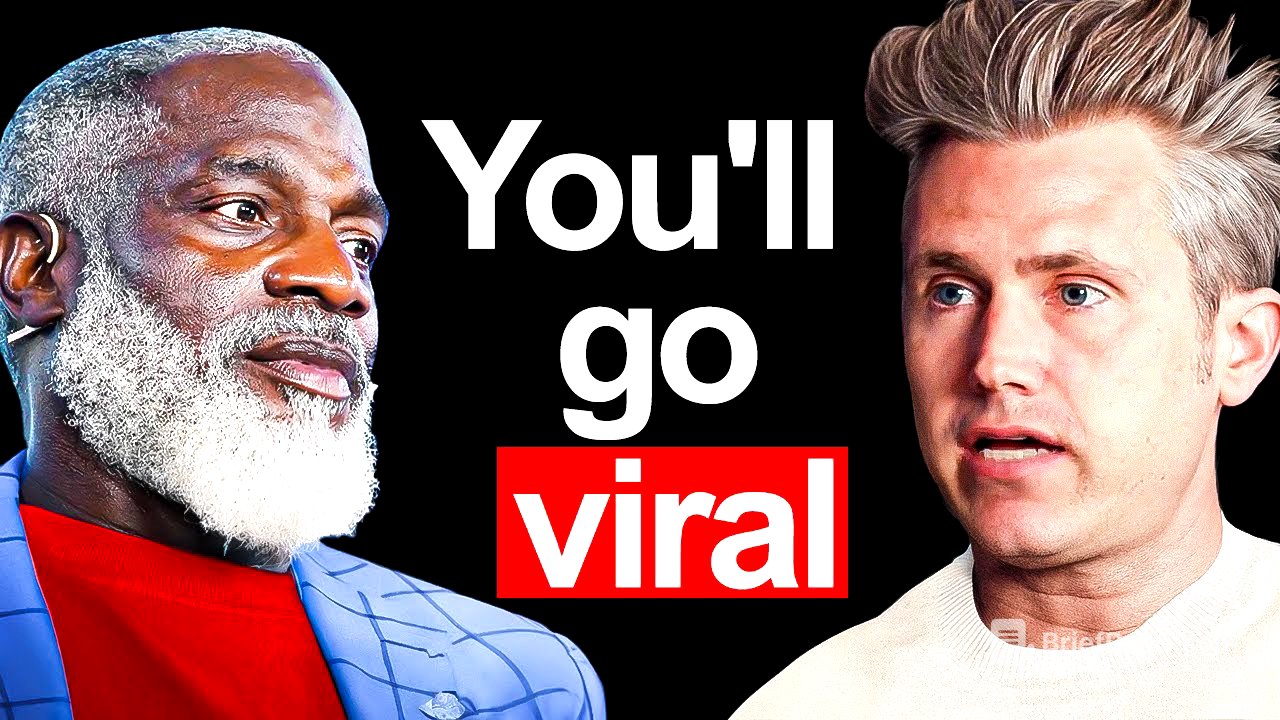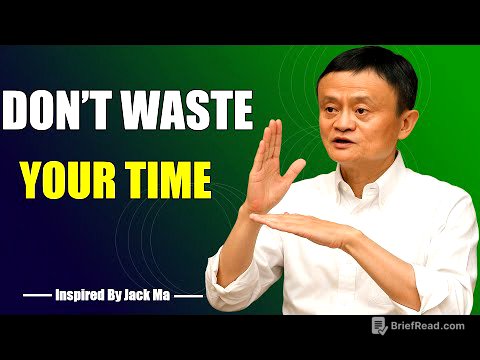TLDR;
This video features Myron Golden interviewing Brendan Kaine, a viral scientist and bestselling author, about how to make videos go viral. Kaine shares his journey into becoming an expert in virality, emphasizing the importance of understanding attention-grabbing techniques and the science behind successful content creation. He discusses the shift in social media dynamics due to algorithms and the increasing competition for attention. Kaine also introduces the concept of formats, repeatable structures that drive success, and provides a framework for analyzing and selecting the right format to achieve virality.
- The key to social media success lies in understanding and applying repeatable content formats, not just chasing trends.
- Analyzing high-performing and low-performing content within a chosen format is crucial for identifying key elements that drive virality.
- Shifting from a passive consumer to an active creator mindset is essential for social media success.
Introduction: Meeting Brendan Kaine, the Viral Scientist [0:00]
Myron Golden introduces Brendan Kaine, a three-time bestselling author known as the "viral scientist." Kaine's expertise lies in understanding how to make videos go viral, a subject he has dedicated nearly two decades to studying. Golden highlights Kaine's books, including "1 Million Followers," "Hookpoint," and "The Guide to Going Viral," emphasizing their potential to impact business and personal branding.
The Genesis of a Viral Expert: From Childhood Curiosity to Film School [1:38]
Brendan Kaine shares his early fascination with grabbing attention, recounting childhood experiences of selling toys and navigating bullying by understanding how to connect with different types of people. His interest in movies led him to film school, but he soon realized the need to stand out in the competitive Los Angeles film industry. Observing the anxiety studios faced in marketing films, Kaine recognized the potential of emerging social media platforms like MySpace and YouTube, which were largely ignored by the film industry at the time.
Early Social Media Experimentation: The First Influencer Campaign [5:34]
In 2006, Kaine convinced a studio to allow him to engage YouTubers to promote the movie "Crank" starring Jason Statham. This initiative involved having YouTubers interview the movie's stars, marking the first-ever influencer campaign on YouTube. The campaign's success, contributing to the movie's profitability and a sequel, propelled Kaine to create social media divisions for movie studios. He also developed an influencer technology platform on MySpace to monetize peer-to-peer marketing, though the market wasn't mature enough at the time.
The Evolving Social Media Landscape: From Free Wins to Algorithm Battles [9:35]
Kaine discusses how the rise of social media has made achieving goals more challenging due to increased competition and the introduction of algorithms. The algorithms prioritize content that keeps users on the platform longer to serve more ads. With users potentially seeing 150,000 pieces of content each time they open an app, standing out requires more than just posting frequently. Kaine debunks the myth of shadow banning, explaining that low visibility is usually due to content not capturing attention effectively.
The Power of Personal Brands: Creative Models for Social Media Success [14:33]
Kaine explains why personal brands often outperform big brands on social media. He notes that many brands repurpose traditional creative assets for social media, which doesn't align with the unique dynamics of these platforms. Creators like Casey Neistat and Mr. Beast, who learned creative storytelling on social media, follow a creative model that resonates with audiences. Kaine emphasizes that virality is not just luck but a science with replicable formulas, citing his team's success in generating billions of views and revenue using their creative model.
Understanding Formats: The Key to Repeatable Success [16:54]
Kaine defines a format as a well-researched, repeatable structure or blueprint that has proven successful. He uses the three-act structure in movies as an example, noting that directors master this format to tell authentic and original stories. While some may see formats as restrictive, Kaine argues that they provide a foundation for creativity, similar to how Steven Spielberg uses the three-act structure across diverse films.
Social Media Formats: From Man on the Street to Visual Metaphors [19:50]
Kaine explains that his team has analyzed over 300 social media formats, highlighting that these formats can be applied across various industries. He describes the "man on the street" format, where a person approaches strangers and a story unfolds, as well as "two characters, one light bulb," where the same person plays two different characters to break down misconceptions. Another format is "visual metaphor," where complex topics are explained using visual aids.
Avoiding Social Media Failure: From Passive Consumption to Expert Creation [25:11]
Kaine identifies the biggest mistake people make on social media: being passive consumers. He urges viewers to adopt an expert creator mindset and actively look for successful formats. He introduces the Hookpoint Format Finder, a tool to identify formats by analyzing viral videos and the consistency with which creators use them. Kaine differentiates between trends, which are fleeting, and formats, which can be used for decades.
Selecting the Right Format: Resources and Excitement [29:28]
Kaine outlines two key questions to consider when selecting a format: What resources do you have available? and What format excites you? He advises starting with existing resources, debunking the myth that success requires a big team or fancy equipment. He shares the story of a hand doctor who gained a large following and secured deals using just an iPhone and a compelling storytelling format. Kaine stresses the importance of choosing a format that inspires and motivates you, as authenticity shines through.
Analyzing Content: Decoding Virality with Gold, Silver, Bronze [35:07]
Kaine emphasizes the importance of analyzing content to understand the differences between high and low performers. He introduces the "gold, silver, bronze" system, which involves studying successful, average, and underperforming content within a chosen format. This analysis focuses on contextual elements like pacing, hooks, thumbnails, titles, facial expressions, and body cues. Kaine highlights that length is not the primary performance driver and that cross-analyzing content can reveal key differentiators.
Instagram Video Analysis: Hooks and Perspective Shifts [37:51]
Kaine conducts a live analysis of Myron Golden's Instagram videos, comparing a low-performing video with 11,000 views to a high-performing one with 2.6 million views. The key difference lies in the hook: the high-performing video immediately presents a perspective shift by challenging the norm of kicking children out at 18, while the low-performing video starts with a vague intention-setting statement.
YouTube Thumbnail Analysis: Specificity and Subverted Expectations [45:39]
Kaine analyzes YouTube thumbnails, comparing Myron Golden's thumbnails to those of Alex Fromosi. He notes that Fromosi's thumbnails are more specific, promising a "full blueprint" for becoming a millionaire in 2024, while Golden's thumbnails are more general. Kaine also highlights the importance of subverting expectations, as seen in a thumbnail that reads "Hard work doesn't build wealth," which challenges a common belief.
The Generalist Principle: Reaching a Wider Audience [43:36]
Kaine introduces the "generalist principle," which involves making expertise accessible and interesting to a wider audience while still targeting the core demographic. He explains that algorithms favor content that can grab and hold the attention of millions. He uses Ryan Serhant, a luxury real estate agent, as an example of someone who applies this principle by creating videos that appeal to a broad audience, such as tours of expensive closets and homes.
Key Takeaways: Overcoming Social Media Failure [53:37]
Kaine summarizes the reasons why most people fail to reach their social media goals: having a passive mindset, not selecting the right format, and not analyzing content effectively. He reiterates the importance of understanding formats, choosing a format that aligns with resources and passions, and studying high and low performers to identify key elements that drive virality.
Conclusion: Final Thoughts and Resources [55:51]
Myron Golden thanks Brendan Kaine for his insights, noting that the conversation has helped him understand how to improve his content creation. Kaine provides a URL, hookpoint.com/myron, where viewers can access his guide to going viral. Golden encourages viewers to apply the principles discussed in the video to improve their content.


![[ShellyPundao] Real Life RELATIONSHIP 🤍](https://wm-img.halpindev.com/p-briefread_c-10_b-10/urlb/aHR0cDovL2ltZy55b3V0dWJlLmNvbS92aS9nZXRLNXd2M1hYNC9ocWRlZmF1bHQuanBn.jpg)






